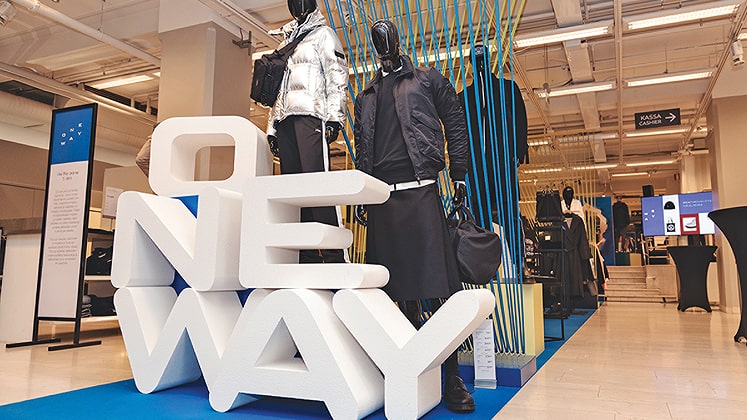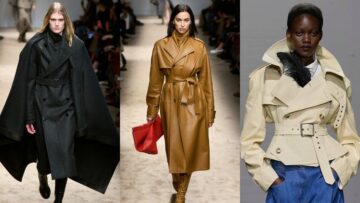Is gender-neutral clothing the next big trend?
The role of male and female binaries in today’s society are blurring at a rapid pace. While women are voicing equality, men are becoming more confident in displaying their feminine side. Even children are being raised in nurseries that are not divided into pink and blue anymore, instead these are designed to be more genderless with neutral coloured interiors, wooden accessories and unisex toys. Fashion campaigns are pushing this notion further into the minds of the growing Gen Z consumers. Fashion brands are refusing to stay behind, with companies like River Island, Abercrombie & Fitch, Zara, ASOS, Gender Free World, Wildfang and H&M already having forayed into gender-neutral clothing.
In September 2018, Finland rolled out an entire floor dedicated to genderneutral fashion in the country’s largest department store, Stockmann.
Taking a lead into the gender-neutral fashion market, Finland has always taken pride in being the pioneer of gender equality, starting from the time when women in Finland became the first in the world to obtain full political rights, in 1906. Today, Stockmann proudly features its huge section called ‘One Way’, located in-between the men’s and women’s floors, selling clothing from top brands like Acne Studios, Calvin Klein, Marimekko, Burberry and Kenzo.
ASOS, UK’s largest online – the only fashion retailer, in its plan to capture sales from a new generation that doesn’t want to be categorised as male or female – launched a new genderless fashion brand called ‘Collusion’. The collection includes items like a digital-print leopard shirt and highwaisted skinny jeans worn on the site by two models. The company has also partnered with influencers who have thousands of followers on Instagram to help develop and market the line.
Gender-neutral fashion, in all probability, is the future of fashion around the globe, but the trend did start to take a noticeable rise since 2015. As per a report by research group NPD titled ‘Retail is becoming less gendered’, it is stated that, “In American business, no area, with the exception of popular entertainment, is blurring the gender lines as quickly as retail. From clothing to footwear to technology, forward-thinking companies are enacting a less binary vision of how we shop, dress and live, in response to an emerging consumer need. A genderless fashion market is developing. It’s far less saturated than its gendered counterpart, and it is rife with opportunity for new entrants.”
Also interesting to note is the fact that the market size for gender-neutral clothing is actually bigger than one can imagine, with the millennials leading the pack. Numerous reports state that androgyny and gender fluidity are becoming norms rather than being exceptions of the millennials only. A 2016 study by the Fawcett Society (an organisation in the United Kingdom that campaigns for women’s rights rooted since 1866), states that, “44 per cent of the British 18 to 24-year-olds surveyed think that gender is binary.”
As per a report by GLAAD (a US non-governmental media monitoring organisation founded by LGBT people in the media), “12 per cent of millennials identify as transgender or gender non-conforming, meaning they do not identify with the sex they were assigned at birth – doubling the number of transgender and gender non-conforming people reported by Generation X (6 per cent).”
Taking the trend more mainstream on the fashion runways, recently during The New York Fashion Week in 2018, brands such as Telfar, Chromat, Vaquera, Gypsy Sport and Eckhaus Latta were all recognised as putting forward a genderless vision into their collections since their inception. The earlier collections of Japanese designers like Undercover by Jun Takahashi have been seen showcasing anklelength pleated skirts in fine grey wool or bold plaid, and long skirts, draped and white, suggesting gender fluidity for young men.
Making it official for all successive seasons to come, in February, the Council of Fashion Designers of America (CFDA) even added a ‘unisex/non-binary’ category to the NYFW calendar.
Moving forward, fashion manufacturers will have a greater need to understand what genderneutral clothing exactly signifies. Debates have it loud and clear, that gender-neutral clothing in today’s time is just not a pair of jeans, a T-shirt or a hoodie. Neither can it be restricted to the male-biased rules of androgyny defined by mere masculine or baggy silhouettes for females. While traditional feminine designs for men are still not as common in the fashion retail sector – newer collections are being developed keeping in mind that fashion pieces are no longer either boyish or girlish.
As per a report by GLAAD (a U.S. non-governmental media monitoring organisation founded by LGBT people in the media), “12 per cent of millennials identify as transgender or gender nonconforming, meaning they do not identify with the sex they were assigned at birth – doubling the number of transgender and gender non-conforming people reported by Generation X (6 per cent).
The luxury fashion market seems to be at the forefront with interesting takes on a new genderless aesthetic. Notable designers that are already known to create genderless collections are JW Anderson, Rick Owens and Rad Hourani. Joining the gang now are younger entrants. For the LVMH 2018 Prize for Young Fashion Designers, half of the nominated designers were recognised to focus on genderneutral fashion. LVMH Director, Delphine Arnault, revealed that three of the nine finalists created genderless collections and also stressed on the fact that the Prize ‘echoes the recent evolutions in fashion’.
As thousands of columns across platforms continue being devoted to inclusivity, gender identity and body positivity everyday – the fashion industry in the upcoming seasons will evidently be gender-free. The basic framework of conceptualising styles and silhouettes for men and women will dramatically change into neutral takes by fresh designers who echo a new generation of an un-gendered fashion utopia. From some to all retailers, it’s time to jump the bandwagon and embrace an era of genderless retail.







